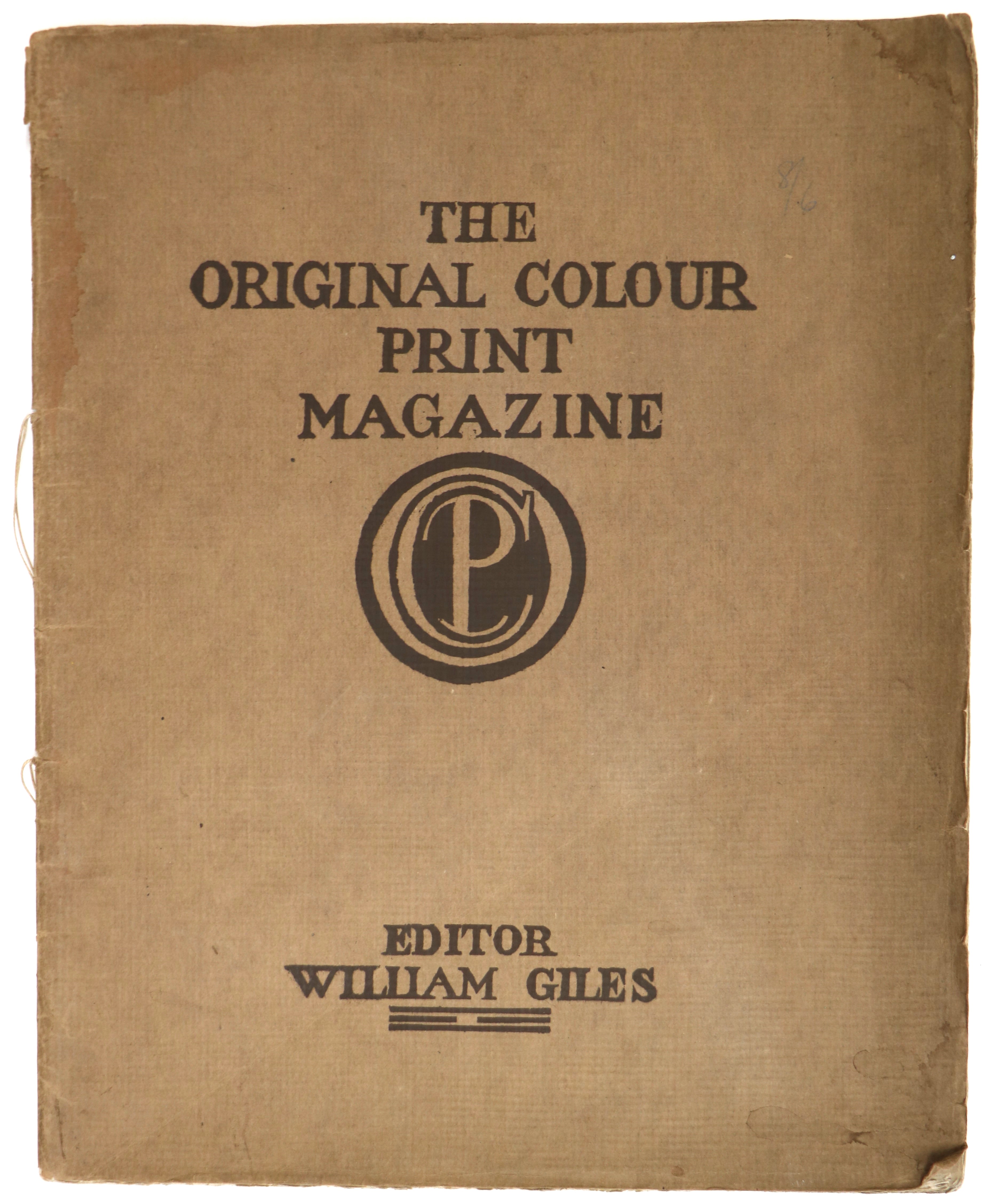Available Copies from Independent Booksellers

Price: US$27.50 + shipping
Condition: Near Fine
Description: Original Photograph, Image 9" X 6 7/8". Inscribed By The Subject. Photographer's Logo At Lower Left. , And His Stamp On Verso. Albert Witzel (1879-1929) Moved To Los Angeles, Where He Opened His Studio At 811 S. Hill St. He Was Soon Recognized As One Of Los Angeles’ Top Society Photographers, With Many Of His Images Appearing In The Los Angeles Times, Starting In 1912. He Began Reaching Out To Theatrical Entertainers In Need Of Carefully Crafted Portraits To Lure Customers. Around The Same Time, Moving Picture Companies Migrated To Los Angeles To Film In The Ever-Present Sunshine, Away From Motion Picture Trust Interference. These Companies Had Recently Introduced The Practice Of Promoting The Stars Of Their Films, Helping To Create Brand Awareness Among Consumers, Who Flocked To Movies Starring Their Favorites. Witzel’S Theatrical Clients Promoted His Talents To Their Movie-Making Friends, Who Quickly Began Hiring Him To Take Their Portraits. Film Companies Employed His Services Too. The Balboa Film Co. Hired Him In 1913-1914 To Shoot Portraits Of Their Star Stable, Quickly Followed By Companies Like Triangle-Ince.Witzel’S Photograph Of Viola Barry From Balboa Films “The Sea Wolf” Was The First Movie Star Portrait To Appear In The Los Angeles Times, 1913. His Images Often Employed Rembrandt Lighting And Offered Moody Shadows And Sheen. Witzel’S Work Began Running Regularly In The Times In 1915, And Film Fan Magazines Like Photoplay And Motion Picture Regularly Published His Work As Well. Witzel Expanded His Work With Studios, Occasionally Shooting Freelance Images Of Sennett Bathing Beauties In 1916 That Were Published In Magazines And Newspapers, And Working On Assignment For Fox Studios In 1917, Photographing Theda Bara In A Series Of Somewhat Soft Pictorialist Images For Her Iconic Films, “Cleopatra,” “Salome,” And Madame Du Barry.” In Order To Handle The Increased Workload, Witzel Added New Studios And Employed Retouchers Like Photographer William Mortensen And Extra Photographers Like Otto Schellenberg, W. F. Seely, George Cannons, And Max Munn Autrey To Shoot Portraits. Autrey Eventually Became Head Of Witzel’S Hollywood Studio At 6324 Hollywood Blvd. From 1922-1924. Their Work Became More Intense And Exotic, Emphasizing A Glamorous Star Look. The Witzel Studio Downtown Also Handled One Of The More Infamous Special Photo Shoots In Silent Film History. Harold Lloyd Posed In The Studio With A “Fake” Bomb That Turned Out To Be Real, Losing His Right Thumb And Forefinger. The Comedian Performed All Of His Action Stunts, Including Hanging Off A Downtown Building, With Only Three Fingers On His Right Hand. N 1923, Witzel Was Forced Out Of His Lease At 828 S. Hill St. By The May Co., New Owners Of The Original Hamburger’S Department Store, Who Wanted To Make Additions To Their Building. The Firm Opened A New Studio At 1007 W. 7Th St., Run By His Brother Charles, To Go Along With One At 536 S. Broadway. This Studio Occupied The Entire Second Floor And The Lobby Of The Recently Constructed Building, With New Up-To-Date Equipment In What The Times Called The “Largest Photography Studio In The West.” The Witzel Hollywood Studio Remained Its Most Attractive, With The South Broadway Studio The Most Modern. During The Mid-1920S, However, Studios Began Establishing Their Own Portrait Galleries To Maintain A Firm Hand And Established Look With The Requirement For An Ever Increasing Production Of Prints. Spurr Left To Establish His Own Studio, Schellenberg Ended Up At Universal, Cannons Went To Sennett, And Autrey Departed To Found Fox’S Portrait Department. Witzel And His Staff Of Photographers Focused More On Special Shoots For Newspapers And Magazines, Like The Peggy Hamilton Fashion Features For The Los Angeles Times, And Other Select Sections.
Seller: Arroyo Seco Books, Pasadena, Member IOBA, Pasadena, CA, U.S.A.

Williams, William Carlos. The American Grain. Albert and Charles Boni, New York, 1925.
Price: US$950.00 + shipping
Condition: Good
Description: 8vo. Original dark gray cloth, lacking dust jacket. Cloth on front and back boards is rubbed; hinges tender. A good copy only, but signed "W.C. Williams" at the top of the front flyleaf. Apparently this copy was Williams' own; acquired through the family of a neighbor and close friend of the poet's.
Seller: Sanctuary Books, A.B.A.A., New York, NY, U.S.A.

WILLIAMS, William Carlos. IN THE AMERICAN GRAIN. Albert & Charles Boni, New York, 1925.
Price: US$1062.50 + shipping
Description: A collection of prose pieces that was the poet's first publication by a commercial press. Wallace A9. SIGNED in red ink in his later hand on the front endpaper. Spine gilt dull; several small ink splashes on bulked fore-edge of text. Very Good, lacking the dustwrapper as usual
Seller: Charles Agvent, est. 1987, ABAA, ILAB, Fleetwood, PA, U.S.A.

Giles, William [edited by]. The Original Colour Print Magazine. London SPW Ltd. 1925, 1925.
Price: US$1695.07 + shipping
Condition: Very Good
Description: Limited to 500 copies. [41-] 80, [1] pp. Folio. Original brown wrappers, dark brown letters to the cover, stitched binding slightly loose, small tears and wear to the edges of covers, one inch tear to the top joint, a few minor tidemarks, slight dust soiling. Edges untrimmed. Slight foxing to the leaves as usually happening to thick leaves, unmarked. Numerous B&W woodcut prints, absolutely complete with five original tipped in lithographs. Very rare and scarce. Very good condition. Copy #43 of 500. The Original Colour Print Magazine was founded for the development of the Original Colour Print including bookplates, the correlated Arts of Heraldry, calligraphy, and design. It was first issued in June 1924 and once a year in 1925 and 1926. The original lithographs in this magazine are as follows: 1. Summer; A Water-colour Print from eight Woodblocks, by Walter J. Phillips, A.R.Can.A. (signed)/ 2. Into the Sea; Woodcut on Cherry Wood by Claude Flight/ 3. The Bookplate of George Hubbard, F.S.A., F.R.I.B.A. By A. J. Downey; Engraved in pure line on copper/ 4. Brocade From Lucca, 14th Century, in the Victoria and Albert Museum. Printed in water-colours from three relief-etched zinc plates by W. Giles/ 5. Early Armorial; Printed in water-colours from three relief-etched plates by W. Giles.
Seller: Aquila Books(Cameron Treleaven) ABAC, Calgary, AB, Canada

NEVINSON, C. R. W. (subject).. Contemporary British Artists.. London: Ernest Benn, Ltd, 1925, 1925.
Price: US$1938.52 + shipping
Description: First edition, first impression, inscribed by the author on the front free endpaper, "To Frank Harris, from one bad boy to another, both with charming wifes [corrected to "wives", with superscript initials], C. R. W. Nevinson, 1931". An excellent association, this is the very copy referred to in the last interview Harris ever gave. Like other prominent artists of his generation, Christopher Richard William Nevinson (1889-1946) was deeply influenced by the experience of the First World War, and his war art earned him a reputation as one of Britain's foremost artists in the Futurist style. He was known for his boasting and exaggerated war stories, and his reputation faltered somewhat after the war, exacerbated by his temperamental and depressive personality. This work explores his work from 1909 up to the time of publication and features plates of works in a number of formats and styles. Frank Harris (1856-1931) was an Irish-American writer, particularly noted for his somewhat lurid autobiography, My Life and Loves (1922-27). He was a well-known and infamous character amongst Anglo-American high society, "generally remembered as being a self-promoting and vulgar man of great talent and energy but with dubious taste" (ODNB). This title is part of the Contemporary British Artists series edited by Albert Rutherston, featuring artists including William Orpen, Stanley Spencer, and Paul Nash. Quarto. Original blue cloth-backed grey boards, spine lettered in gilt. With dust jacket. Frontispiece self-portrait and 35 monochrome plates at rear. Spine rubbed and bumped, minor wear to corners, edges foxed, offsetting to endpapers, a very good copy with clean plates in like dust jacket, spine toned with minor puncture and a few faint water marks, ends chipped, a couples of short closed tears, extremities creased and nicked. Presenting well, still bright and sharp.
Seller: Peter Harrington. ABA/ ILAB., London, United Kingdom